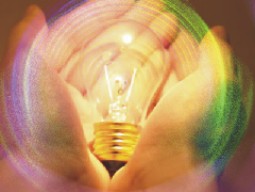INVENTIONS - A PRODUCT OF CREATIVE IMAGINATION
 Inventions. An idea - the light bulb - the aha! The Roman running through the town yelling Eureka (I have it!). That’s the exciting part of Inventions. Okay, you have your idea, now what? This has been a problem throughout time. Starting in around the Renaissance, the problem was partly solved with the patent: The word patent in this sense means an “open letter.” Such letters were used by medieval monarchs to give rights and privileges. The letters served as proof of those rights given by the monarch for all to see. It is generally thought that the first informal inventions and patent system were developed in Renaissance Italy. This system was spread to the rest of Europe. The first recorded patent of invention was granted to John of Utynam. In 1449, he was awarded a 20-year monopoly for a glass-making process previously unknown in England. He supplied glass for the windows of Eton College Chapel, UK. In return for his monopoly, John of Utynam was required to teach his process to native Englishmen. That same passing on information is now fulfilled when the patent is published. In North America the colonies adopted a similar system of limited monopolies. Following the revolution in 1788 Article I, section 8 of the Constitution was ratified: 'The Congress shall have power . . . to promote the progress of science and useful arts by securing for limited times to authors and inventors the exclusive right to their respective writing and discoveries'. More recently, during the 1980s, we have seen the development of international bodies. These bodies allow patent applications to be filed at the same time in a number of countries. In 1995, US patent law was changed following the GATT agreement to “harmonize” USPTO practice with the patent system in other countries. There are now nearly 7 million patents in the Unites States since 1790. That’s a lot of creative people. Especially since a new idea has to be original and not patented before. That’s a lot of original thought. One thing that I have experienced in the patent field is kind of ... what can I say ... “woo-woo.” What I mean is kind of ... “Twilight Zone-ish.” I don’t know how many times I had a client walk through the door with an idea - that I had never heard of before - And when we got the search report back we would find that someone else had the same idea. At sometimes the same date and time. Sometimes it was somewhere across the world. It’s spooky. I personally think that the ideas float out there in the ethers and the one with the proper receptors can pick them up. Or -- the human brain sends off electro-magnetic waves of their ideas, and some people can pick them up if they are attuned. Weird? Then why do I find the same phrases, sometimes word-for-word, in essays that I score, that are tested in various places in the state at the same time? Something to wonder about. And, why I am fascinated with the invention process. There is some new information I found on this topic (universal consciousness) that is fascinating and easy to follow. You can find it on my page on PERPETUAL MOTION: INVENTIONS - PERPETUAL MOTION ALTERNATIVE SOME THINGS TO DO - AND WATCH OUT FOR If you invent something - DOCUMENT IT! Use a hard-bound journal and write down all steps you take with the development of your idea. Have WITNESSES (that you trust) see your writings and SIGN each page as a witness. USE NON-DISCLOSURE AGREEMENTS Anyone you talk to or show your invention to should sign such an agreement. This is difficult at times - we will talk about that later. Stay tuned. You really should go to a Registered Patent Attorney if you are going for a patent. The language and terms of the Patent Office are different than regular English - and if you don’t talk their language, your application will fail. WATCH OUT for “invention firms” and “idea corporations” that tout help to develop and/or market your invention. Some of them are nothing but “scam artists” - and a waste of money that could be spent on a patent attorney that could be more helpful - and sometimes even less expensive. REMEMBER - getting the patent is only about 1% of the process. Marketing and/or licensing the invention is 99% of the process. We’ll will be showing you possible resources for patent searches, patent attorneys, books - and if you want to try it yourself - patent software that you can use to give you a better shot at it. I love the wacky inventions that made it through the process, so we will come up with those from time to time. They’re a hoot. In development also are handouts (ebooks) on the patent process and what you have to do to get a patent. Also blurbs on what to watch out for in more depth. Come on back. When these are ready, you will be able to download them - or receive them through email. Bookmark us please. Y’all come back, Y’ hear?
|
|
|
|
|



